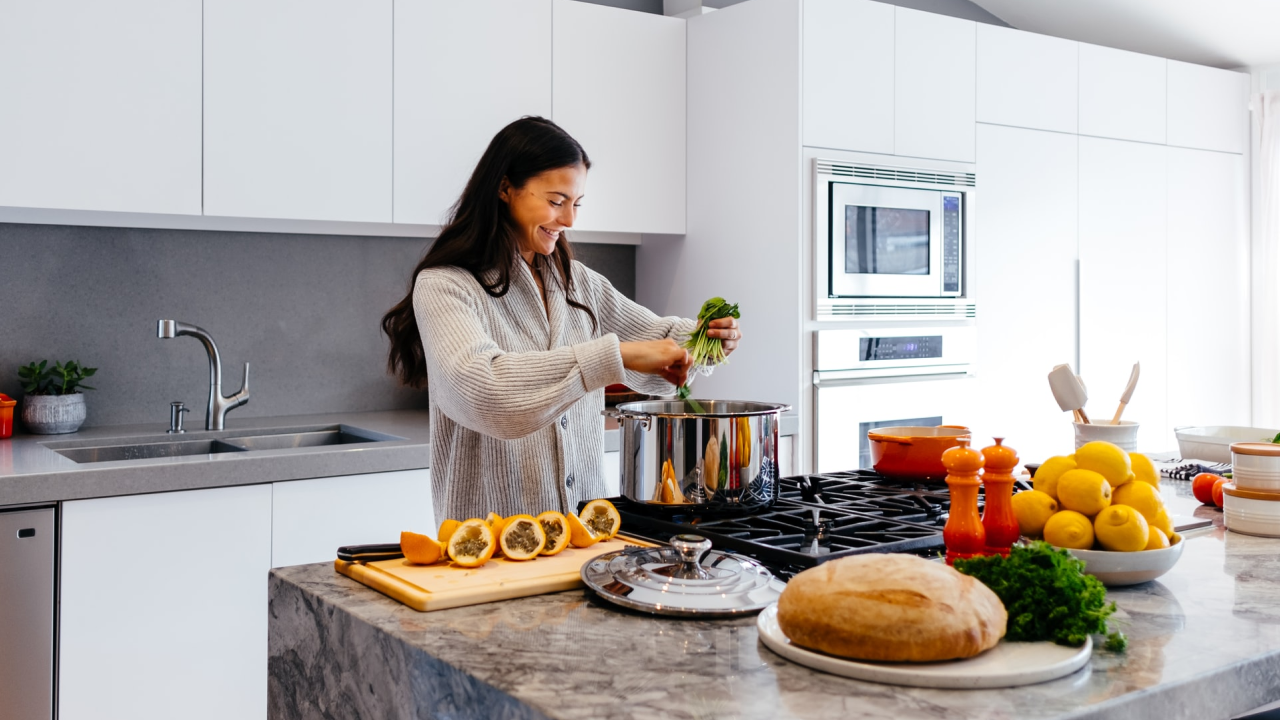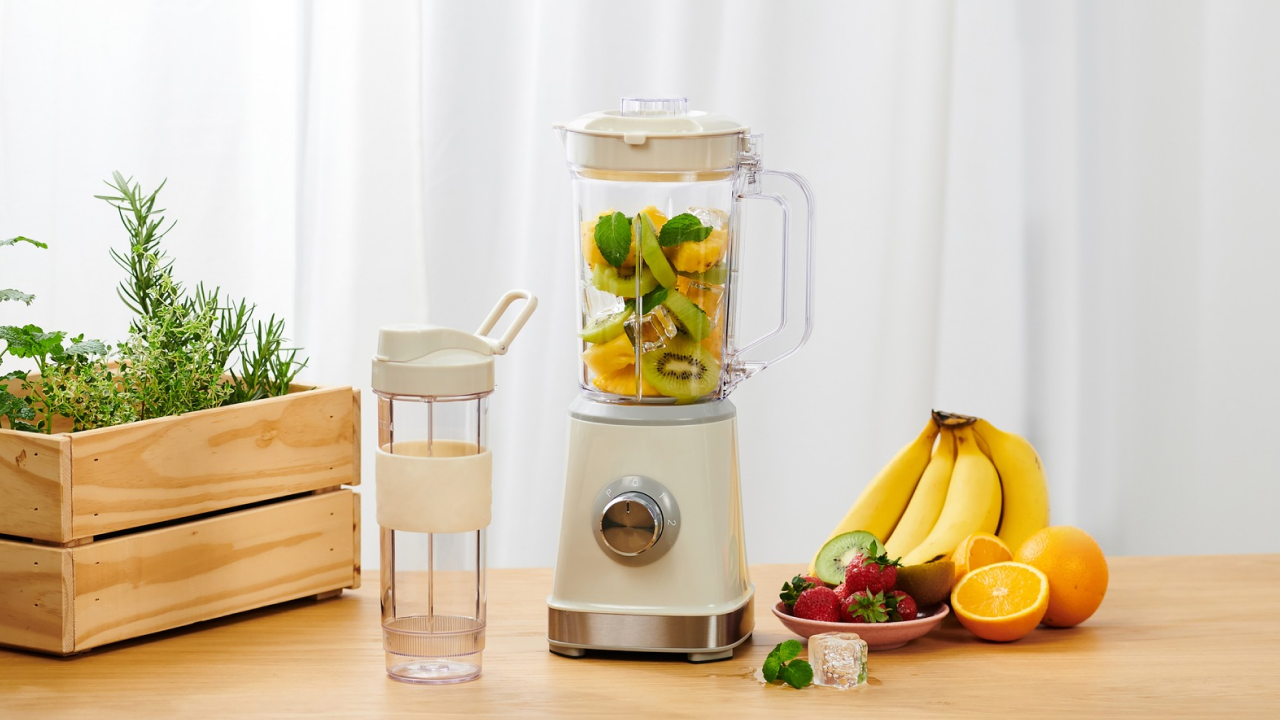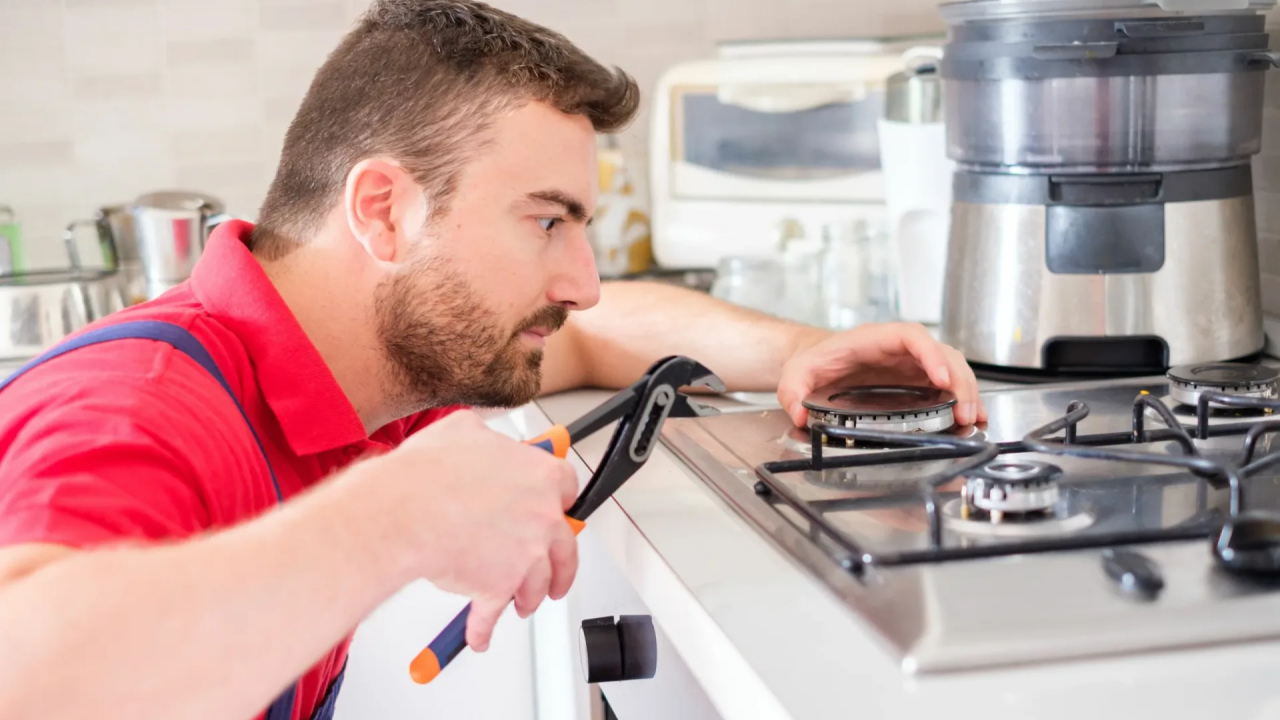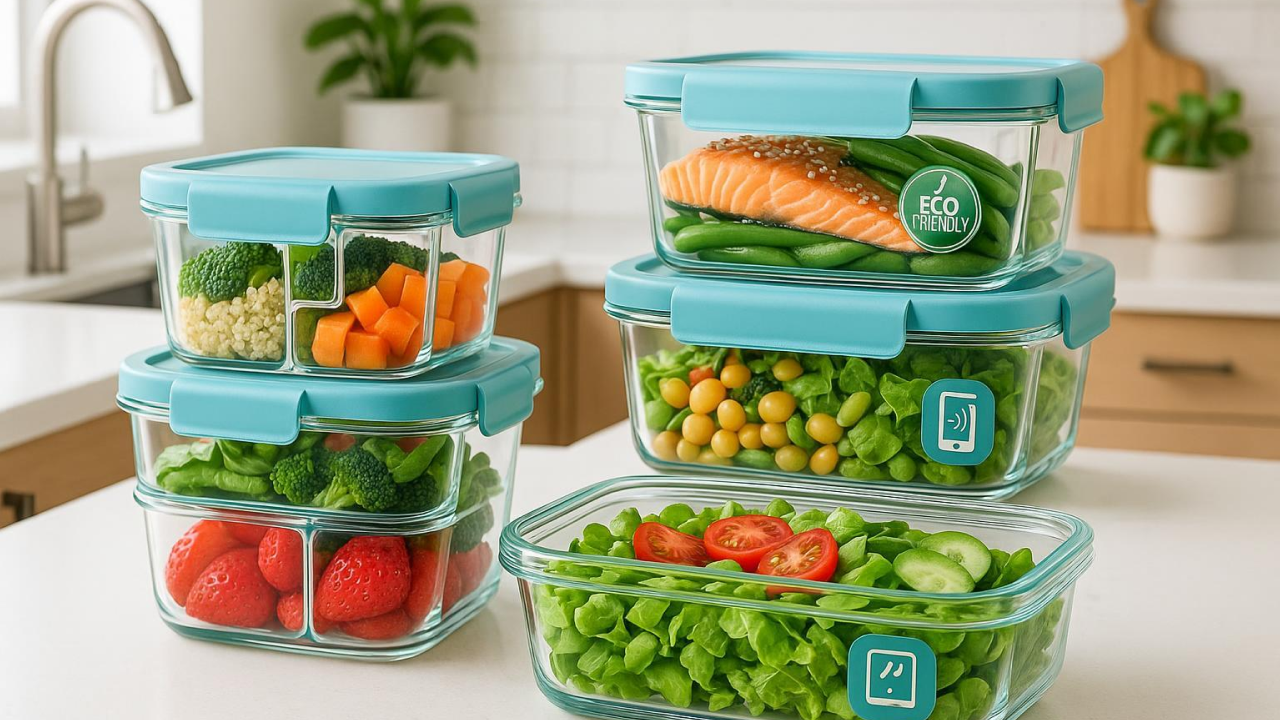Introduction :
Moving into your own home is a very special moment. You might be a student, a young worker, or someone living alone for the first time. Making your first kitchen is a big step. A kitchen is not just for cooking it is the center of the home. It is the place where you make food, try new recipes, and share good times with family and friends. For beginners, setting up a kitchen can feel confusing. There are so many tools, machines, and items to choose from, and it is hard to know which ones you really need. But don’t worry you do not have to buy everything right away. With some simple planning, you can make a kitchen that is useful, easy to work in, and not too expensive. This beginner’s guide will teach you all the basics: what you need, how to shop wisely, how to keep things organized, and easy cooking tips. By the end, you will know how to make a kitchen that fits your life.
Why Setting Up Your Kitchen Matters
Having a good kitchen is very important. When your kitchen is set up well, you can eat healthier because you will cook at home instead of always buying food outside. Cooking at home also saves money since it is cheaper than eating in restaurants or ordering takeout every day. A kitchen that works well gives you comfort and freedom you can make the food you like, try new dishes, and even cook for your family and friends when they visit. When everything in the kitchen has its own place, cooking becomes easier and less stressful because you don’t waste time looking for things. A clean and organized kitchen also makes you feel happy and relaxed while working. Over time, setting up your kitchen will help you practice cooking more often. The more you cook, the better you become at it, and this skill will stay with you for life. Cooking is not just about food it also builds confidence, independence, and the joy of creating meals that bring people together.
Step 1: Planning Your Kitchen Setup
Before you start buying pots, pans, and other kitchen items, it is very important to make a good plan. The first thing to think about is your space. Do you have a very small apartment kitchen, a small studio corner with just a stove, or a big family kitchen with more room? The size of your kitchen will decide how much you can actually keep and store without making the place look messy. After that, think about your lifestyle and cooking habits. Will you be cooking every day, preparing food in advance for the week, or only making quick and simple meals like breakfast, noodles, or sandwiches? Your answer will help you decide what tools and appliances you really need. It is also a good idea to set a budget because kitchen things can be expensive if you buy too much at once. Start with the most important and useful items, and then slowly add more when you have extra money or when you learn more recipes. Another important part of planning is storage. If your kitchen is small, you will need to be smart about organizing. Think carefully about where each item will go before you bring it home. Use shelves, racks, or small containers to save space and keep things tidy. A little planning in the beginning will save you stress later and make your kitchen more comfortable and easier to use.
Step 2: Essential Cookware You’ll Actually Use
When you are setting up your first kitchen, you do not need to buy 10 or 15 different pots and pans. That will only take up space and waste money. Instead, start with the basic cookware that you will actually use for most everyday cooking. A frying pan, also called a skillet, is one of the most important items. A non-stick skillet about 8–10 inches wide is perfect for making eggs, stir-frying vegetables, and cooking simple meals without the food sticking. A saucepan is another must-have because it is very useful for boiling pasta, making soups, heating sauces, or even reheating leftovers. For bigger meals, you should also have a large pot, often called a stockpot. This is great for cooking rice in large amounts, boiling pasta for the whole family, or making stews and curries. Even if you do not bake very often, a baking sheet or tray is very handy. You can use it for roasting vegetables, cooking frozen food items like fries, or making cookies when you feel like trying something sweet. A casserole dish is another useful item, especially if you like baked meals like pasta, lasagna, or roasted meats. You should also have at least two mixing bowls one medium and one large. These bowls can be used for mixing cake batter, tossing salads, or marinating chicken and vegetables before cooking.
Step 3: Must-Have Kitchen Tools & Utensils
Cooking can quickly become difficult and frustrating if you don’t have the right tools to work with. That is why it’s important to have some basic kitchen utensils that make your work easier and safer. The most important tool in any kitchen is a chef’s knife. A good knife helps you cut vegetables, meat, and almost anything else with less effort. Along with this, a paring knife is useful for small jobs like peeling apples, slicing fruit, or cutting small vegetables. To go with your knives, you will need a cutting board. It is safer to cut food on a board instead of directly on the counter, and it also protects your kitchen surfaces. Choose one strong board, either wood or plastic. When it comes to cooking food, some utensils are must-haves. A wooden spoon is great for stirring because it doesn’t scratch pans, especially non-stick ones. A spatula or turner is helpful for flipping eggs, making pancakes, or stir-frying vegetables. A good pair of tongs makes it easy to turn food on a pan, grill meat, toss salads, or serve pasta without burning your hands. You should also keep measuring cups and spoons because many recipes require exact amounts of ingredients. These help you cook and bake with more accuracy.
Step 4: Essential Appliances
Kitchen appliances make cooking easier and faster, but you don’t need to buy every new gadget you see in stores. Start with the most useful ones that help in daily cooking. The most basic appliances are a stove and oven, which usually come with most homes or apartments. These are the main tools for cooking meals, baking, or heating food. A microwave is another very handy appliance, especially for beginners. It can reheat leftovers, cook simple dishes, or quickly defrost frozen food. If you enjoy bread or bagels, a toaster or toaster oven is a good addition. It also works well for reheating small snacks without using the stove. A blender is another helpful appliance, especially if you like making smoothies, soups, or sauces. It makes cooking healthier meals much easier. An electric kettle is very useful for boiling water quickly for tea, coffee, instant noodles, or even speeding up cooking tasks like boiling pasta water. If you eat rice regularly, a rice cooker can save time and make cooking rice simple. It cooks the rice perfectly without you having to watch over it.
Step 5: Stocking Your Pantry
Having a well-stocked pantry is one of the smartest ways to make cooking easier and faster. When your pantry has the right basics, you won’t need to run to the grocery store every time you want to make a meal. Start with simple grains and carbs like rice, pasta, oats, and bread or tortillas. These foods form the base of many meals and can be used in lots of different ways. For example, rice and lentils can become a filling meal, pasta can be cooked with a simple sauce, and oats are perfect for a healthy breakfast. Next, add some proteins to your pantry. Lentils and beans are great because they are cheap, healthy, and last a long time. You can buy them canned or dried. Canned tuna or chicken is also useful for quick meals, and eggs are one of the most versatile ingredients you can keep in your kitchen. To make your food tasty, you’ll need oils and condiments. A bottle of cooking oil whether it’s vegetable, olive, or coconut oil is a must for almost all recipes. Vinegar and soy sauce are useful for dressings, stir-fries, and marinades, while ketchup and mustard are handy for sandwiches and snacks. And of course, no kitchen is complete without salt and pepper, the two most basic seasonings. Having a few spices can make a big difference in your cooking. Start with chili powder, turmeric, cumin, paprika, and a mix of herbs like Italian seasoning. With just these, you can add flavor to almost any dish. Don’t forget other essentials like sugar or honey for sweetness, tea or coffee for your daily routine, flour for baking or making flatbreads, and baking powder or soda for simple cakes and pancakes.
Step 6: Fridge & Freezer Basics
When setting up your fridge for the first time, focus on keeping it simple yet functional. Start with the basics like dairy products milk, yogurt, cheese, and butter which form the foundation of many meals. For proteins, stock items such as chicken, fish, tofu, or plant-based alternatives depending on your diet. Vegetables like onions, garlic, carrots, and leafy greens are essential for everyday cooking, while fruits such as apples, bananas, and other seasonal options make for healthy snacks. In the freezer, keep practical staples like frozen vegetables, bread, ice cream, and frozen meats that can save you time on busy days. To avoid food waste, always label leftovers and organize your fridge so that nothing gets forgotten at the back.
Step 7: Kitchen Cleaning Essentials
A clean kitchen is a safe and pleasant kitchen, so stocking up on the right cleaning essentials is just as important as buying cookware and groceries. Make sure you have dish soap and a good sponge or scrubber for everyday dishwashing, along with a dish rack or drying mat to neatly air-dry utensils. Keep plenty of kitchen towels on hand for wiping counters and drying hands, and don’t forget trash bags for easy waste disposal. An all-purpose cleaner is a must-have for tackling spills and disinfecting surfaces, while food storage containers are perfect for keeping leftovers fresh and organized. A simple yet powerful habit to adopt is cleaning as you cook this prevents overwhelming messes and keeps your kitchen tidy, efficient, and stress-free.
Step 8: Organizing Your Kitchen
Organizing your kitchen is the key to saving time and making cooking an enjoyable experience rather than a stressful chore. Start with the zone method by creating specific areas for prepping, cooking, cleaning, and storage so everything has its place and you can work more efficiently. Take advantage of vertical storage solutions such as shelves, hooks, or even magnetic strips for knives to free up counter space. Inside your drawers, use dividers to keep utensils neat and easy to find instead of tangled together. Store dry goods in clear jars or containers, which not only look visually pleasing but also make it easy to see when you’re running low. Finally, make decluttering a regular habit check your shelves and pantry often to remove expired or unused items, ensuring that your kitchen stays tidy, functional, and ready for your next meal.
Step 9: Smart Shopping Tips for Beginners
When you’re just starting out in the kitchen, smart shopping can make all the difference in building a functional yet budget-friendly setup. The key is to start small by purchasing only the essentials first, then gradually adding more items as you discover what you actually need while cooking. Invest where it matters a sharp knife and a sturdy pan may seem pricey upfront, but they’ll last for years and make everyday cooking much easier. At the same time, strike a balance by mixing high and low splurge on durable items that you’ll use often, and save money on trendy gadgets or tools that may not get much use. Whenever possible, choose multipurpose tools, like a Dutch oven that can serve as a pot, slow cooker, and roaster all in one, reducing clutter and maximizing efficiency. Don’t overlook second-hand options either thrift stores, garage sales, and online marketplaces often hide gems that can give your kitchen a strong foundation without draining your wallet.
Step 10: Beginner Cooking Hacks
Even with a fully stocked kitchen, cooking can sometimes feel overwhelming, but a few simple hacks can make the process much easier. Start by mastering five go-to recipes staples like pasta, stir-fry, an omelet, soup, and salad are versatile, quick to prepare, and will build your confidence in the kitchen. To save time, try batch cooking, where you prepare larger portions so you can enjoy leftovers or repurpose them for another meal. Make smart use of your freezer by storing extra portions, which come in handy on busy days when you don’t feel like cooking from scratch. As you cook, remember to taste along the way this allows you to adjust seasoning gradually instead of risking an over-salted or bland dish. Most importantly, keep it simple. Delicious food doesn’t have to be complicated; focusing on fresh ingredients and straightforward techniques is often the best way to eat well without stress.
Conclusion
Setting up your first kitchen is an exciting milestone one that combines practicality with creativity. With the right essentials, thoughtful organization, and a willingness to experiment, you can create a space that makes cooking both enjoyable and rewarding. Remember, you don’t need to stock everything at once; start with the basics you’ll use most often and allow your kitchen to grow with your skills and lifestyle. Your first kitchen is more than just pots, pans, and gadgets it’s a place where you’ll discover independence, nurture creativity, and build confidence through meals that truly feel like home. Whether you’re cooking for yourself or sharing food with others, every dish is a step toward making your kitchen your own.




